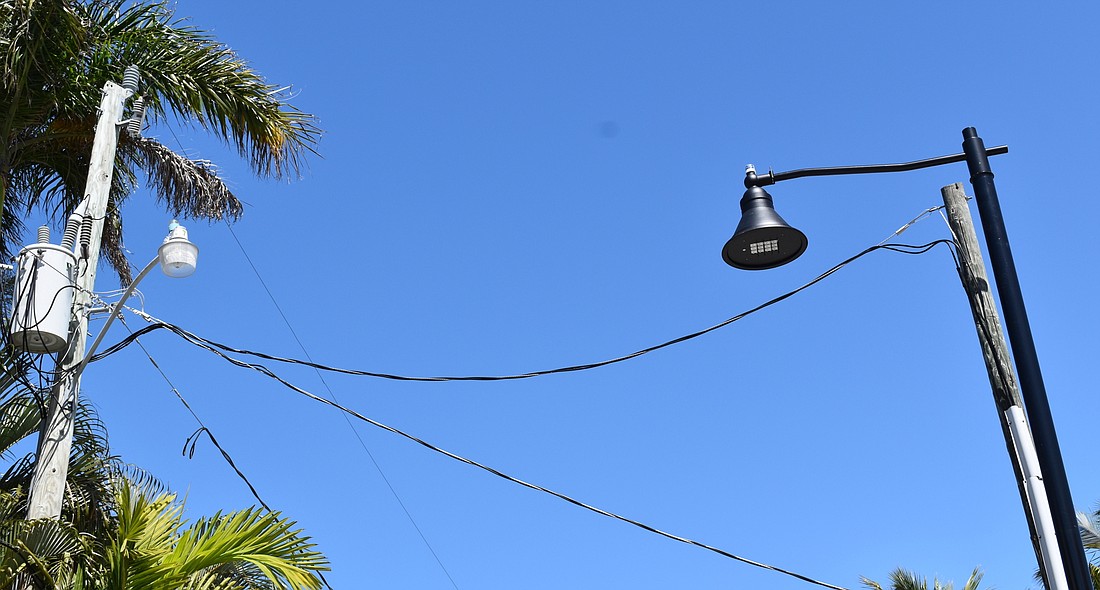- April 25, 2024
-
-
Loading

Loading

Something's missing on the south end of the island.
Sometimes, without thinking of it, it's hard to imagine what once was there looming above Gulf of Mexico Drive and the nearby neighborhoods. But now that power lines, TV and phone cables, transformers, insulators, cutouts, lightning arrestors and all kinds of other tech have disappeared from view, the progress being made on the town's underground utilities is visual and obvious, at least in the first phase.
"We're done," said James Linkogle, the project manager for the town's Public Works Department. "If you haven't been down there, if you have noticed, I hope, all the poles are gone, and we are finalizing all of our remaining punch list items with our contractor."
The town's underground project, launched in July 2019 at an estimated cost of $49.1 million, is showing glimpses of what the town might look like the end of the 2022 when all the overhead cables and components might be gone. Florida Power and Light is responsible for removing the poles, which could take some time beyond, but by then the underground system could be fully energized and supplying the town's homes and businesses.
As things stand now:
"We're moving really fast through the project, and, as a matter of fact, I'm anticipating within the next 45 days for sure, all of the conduit boring will be complete throughout the whole project," Linkogle said.
The project, which can trace its lineage to 2015, was originally planned along a five- to seven-year timeline. But following the 2020 hurricane season, Porter said, FP&L sought to compress the schedule.
"They said, 'We'd really like to get this in three years,' so we came back and said 3.2 years, and now we're getting down close to that window in December of this year, so we're really excited as to where we are," Porter said.
Remaining on the to-do list is installation of Gulf of Mexico Drive streetlights, a process Linkogle said was delayed somewhat by a production glitch that built streetlight bases with the wrong mounting-bolt pattern, and consideration of additional lighting along the Gulf of Mexico Drive corridor, along the roadway and the multiuse pathways.
With funding remaining in the town's Gulf of Mexico Drive accounts owing to that portion of the overall project remaining under budget (about $1.2 million in unspent money), the town's Public Works Department recommended three areas for highway-style street lights not originally part of the Florida Department of Transportation plan.
Public Works Director Isaac Brownman said additional lights could be installed in the 5100 block of Gulf of Mexico Drive, in the 4700 block and in the 4400 block based on the patterns of pedestrians crossing the highway to and from the beach.
"A lot of sunsetters walk across or drive across and come back, so we would actually recommend extending those highway lights to those three locations because they have shown a level of pedestrian activity in those areas that exceed (FDOT's) their peak hour warrants," he said,
Each light would cost about $16,000 to buy and erect and connect them to the underground grid. "I would recommend being agreeable to adding those three lights," Brownman said.
Town leaders could also tap into that $1.2 million to finance the purchase and installation of 3.5- and 4.5-foot-high bollard-style lighting along stretches of the town's multiuse trail, though costs for the entire island would exceed the available budget, perhaps as much as $3 million.